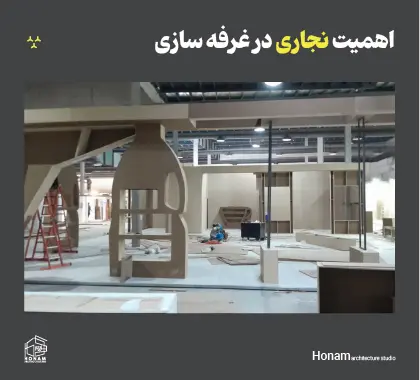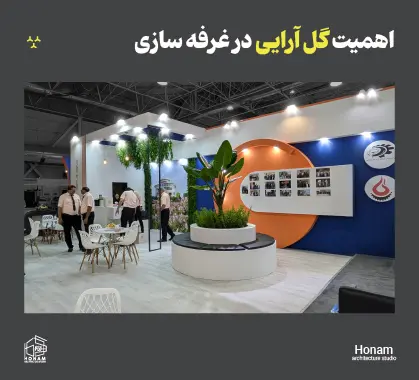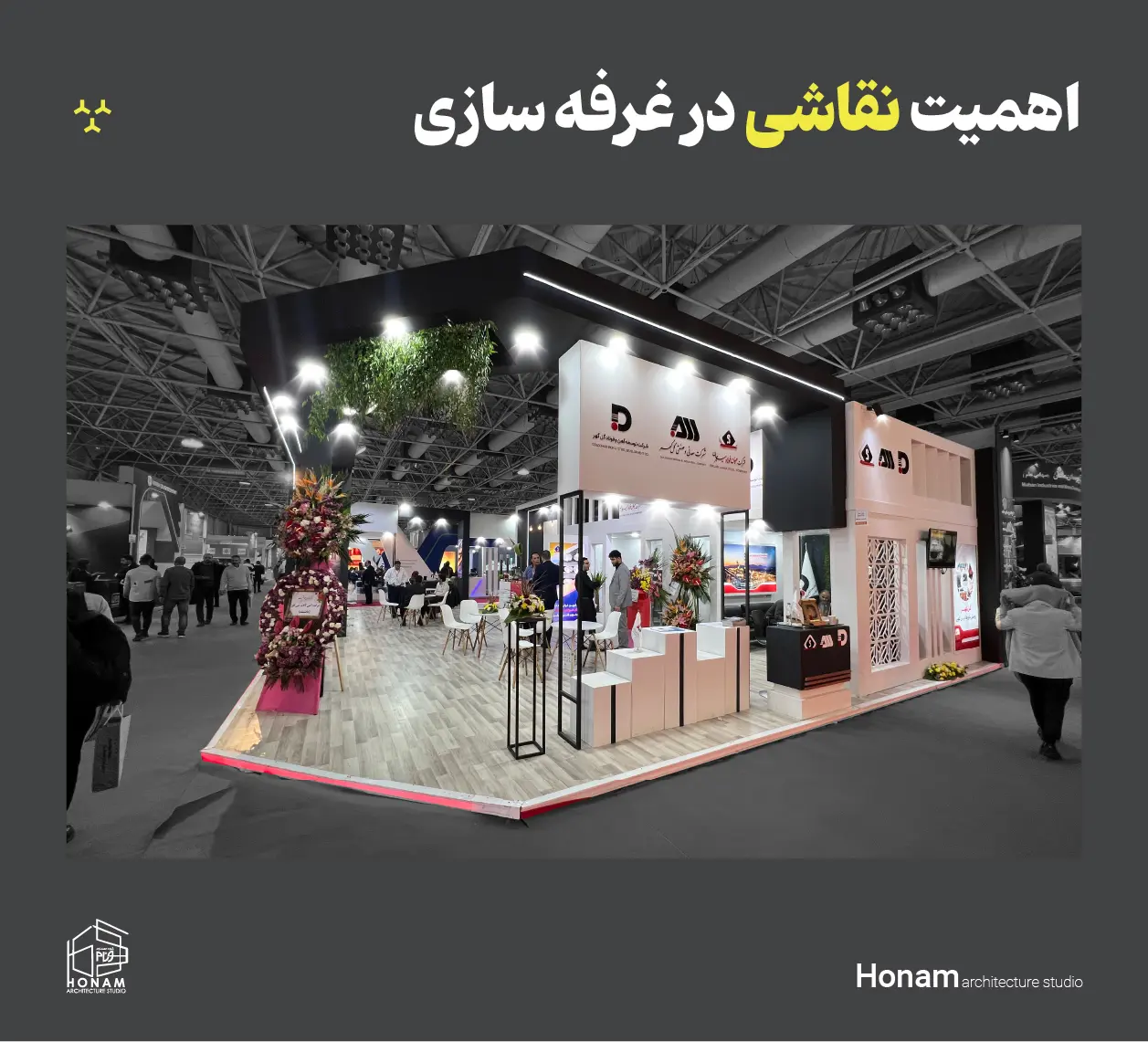Importance, Process, and Its Impact on Final Quality
Introduction
Carpentry is one of the most crucial stages in the booth construction process, directly influencing the quality, durability, and aesthetics of the booth. This stage involves the design, cutting, assembly, and installation of wooden and MDF components that form the booth’s main structure. Precision in this phase not only enhances the booth’s longevity but also ensures visual harmony and structural integrity. In this article, we will explore the details of the carpentry stage in booth construction, its significance, and its impact on the final project outcome.
The Importance of Carpentry in Booth Construction
Creating the Booth’s Main Structure
The booth’s skeleton and framework are primarily made from wood or MDF. At this stage, all main components, such as walls, ceilings, counters, and stands, are designed and installed. The strength and precision of this phase have a direct impact on the booth’s final quality.
Precision in Cutting and Assembly
Using advanced cutting and assembly tools such as CNC machines and laser cutters ensures high accuracy in design and execution. Precise cuts, smooth edges, and professional joints not only enhance build quality but also speed up the installation process.
Enhancing the Booth’s Aesthetic Appeal
In booth construction, visual appeal is of high importance. Accurate and detailed carpentry allows for the creation of special design elements, such as arches, curved edges, and three-dimensional structures, contributing to a more attractive exhibition booth.
Carpentry Execution Stages in Booth Construction
1. Design and Blueprinting
Before starting the carpentry process, detailed blueprints are prepared using design software such as AutoCAD and 3D Max. This stage involves determining dimensions, cuts, joints, and assembly methods.
2. Cutting and Material Preparation
Once the design is approved, the necessary materials, such as MDF, chipboard, and various types of wood, are cut. This stage requires high precision and the use of advanced machinery to ensure optimal quality.
3. Assembly and Joints
At this stage, different parts are connected according to the design plans. Modern techniques such as finger joints, double dowels, and concealed screws are used to create a sturdy and durable structure.
4. Sanding and Final Finishing
After assembly, all surfaces are sanded to ensure smoothness and remove any imperfections. This step ensures that painting and finishing processes are applied evenly and without defects.
The Impact of High-Quality Carpentry on Final Booth Construction
- Timely Completion: If carpentry is delayed, all subsequent stages, including painting, lighting, and decoration, will face setbacks. Therefore, speed and precision in this phase ensure the project is delivered on time.
- Durability and Strength: Strong joints and precise cuts ensure that the booth is not only visually appealing but also resistant to environmental factors and transportation.
- Ease of Installation and Dismantling: Well-crafted booths are easy to set up and disassemble, allowing for the reuse of components in future projects.
Conclusion
Carpentry in booth construction plays a key role in creating a high-quality, durable, and visually appealing booth. Precision in this stage enhances aesthetic appeal, structural strength, and timely project delivery. Utilizing modern equipment and an expert team in this phase ensures the success of the final booth construction.





